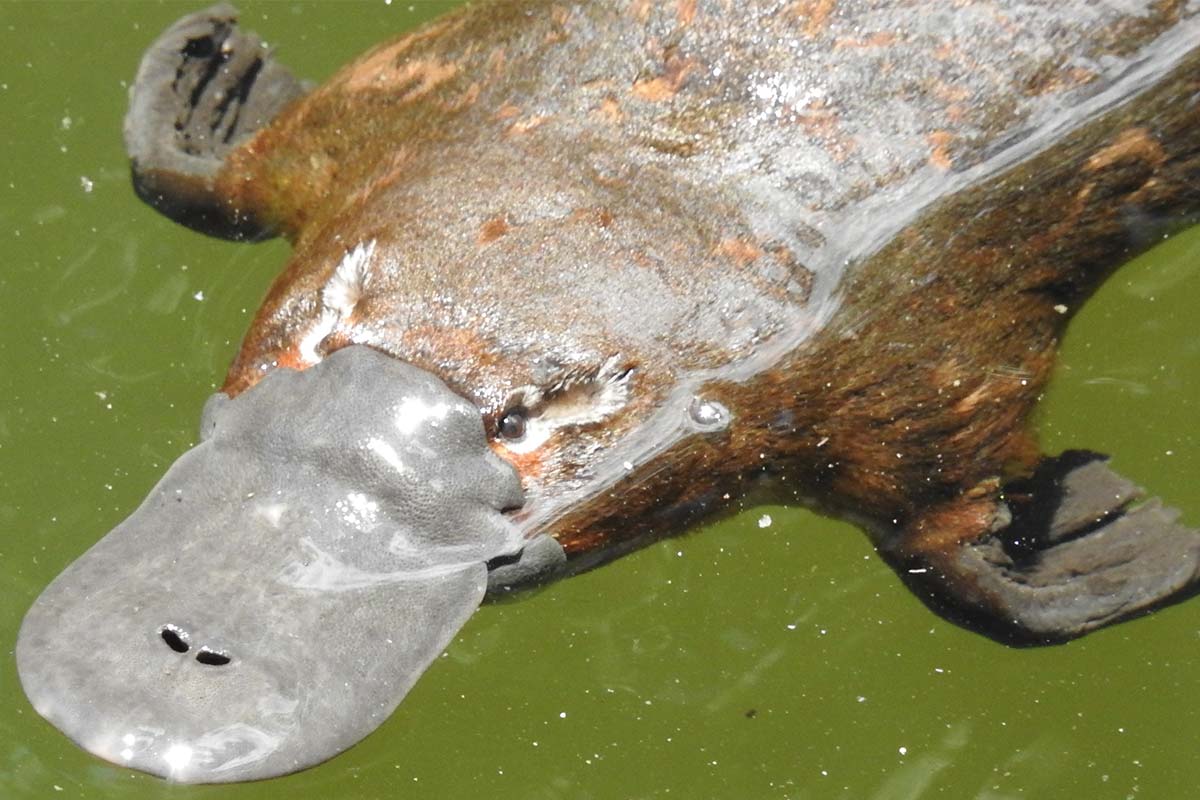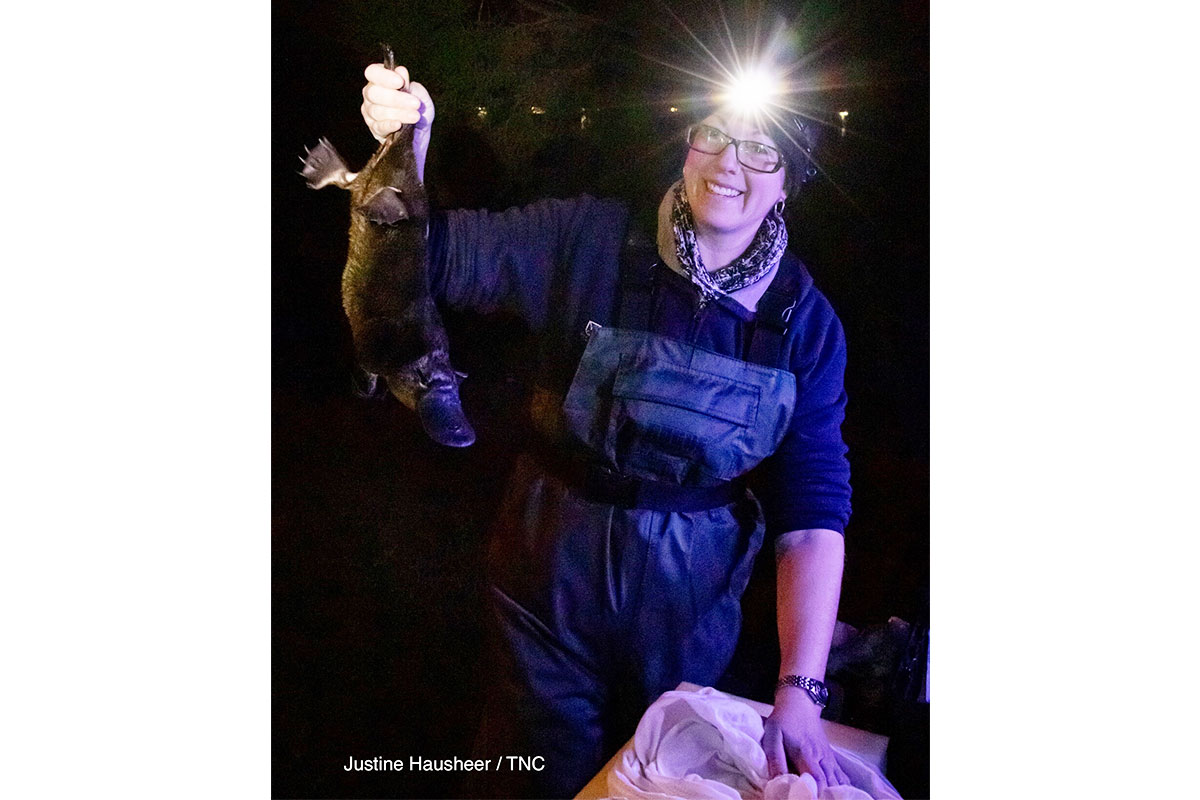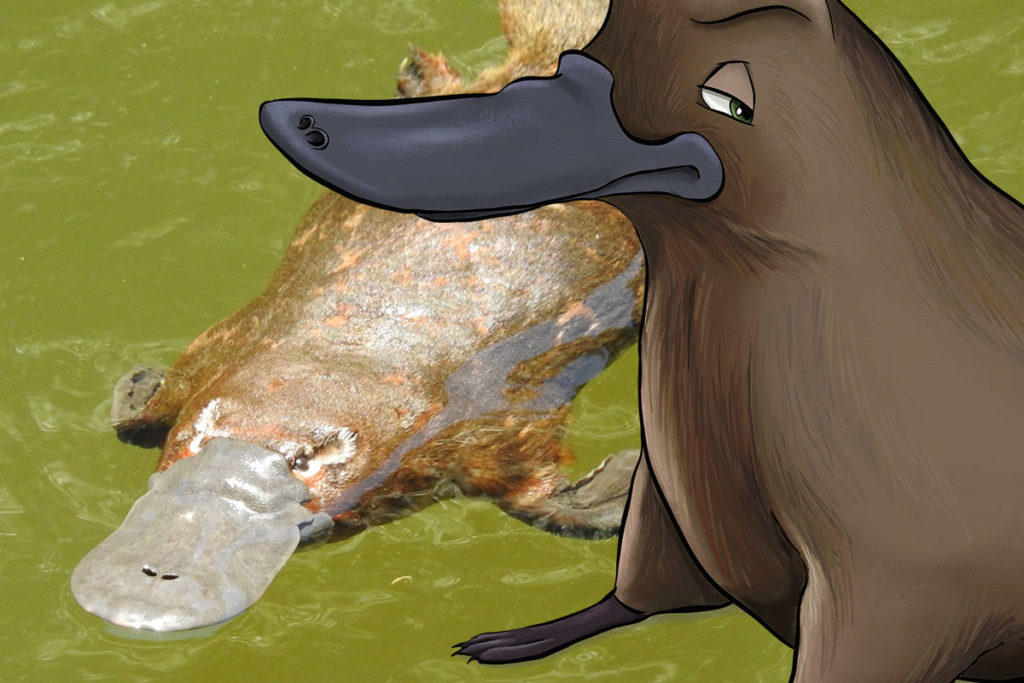From the Field: Headquarters speaks to real-life Rangers working to save ANiMOZ species like ANATi the Platypus!
In our From the Field series, we talk to scientists working across Australia to save the Rare and Highly Rare animals you know from the World of ANiMOZ. Today, we hear from Ranger Tam who works with ANATi!
TELL US ABOUT YOURSELF!
Hi, I’m Ranger Tam and I’m an ecologist researching ANATi.
I want to know if they are healthy and thriving in the wild, especially close to the big city Brisbane where they have a lot of human disturbances impacting their homes.
As ANATi is nocturnal, a day of fieldwork starts in the afternoon and goes throughout the night. Along with a volunteer, we set nets at multiple sites along a waterway. I use special nets called fyke nets to capture ANATi. I have two nets per site to hopefully capture any ANATi moving up or down stream (one facing upstream, one facing downstream).
We check the nets multiple times throughout the night.
TELL US ABOUT ANATi!
ANATi is a semi-aquatic mammal (living partly in water and partly on land). They feed only in water but shelter on land in burrows along the creek banks.
They are only found in freshwater habitats along the east and southeast coast of Australia from Tasmania, Victoria, New South Wales and as far north as Cooktown in Queensland. They are extinct on the South Australian mainland however, there is an introduced population that lives on Kangaroo Island.

A FRIEND OF ACU?
ANATi is in the same family group as ACU; they are monotremes and are different from other mammals as they lay eggs and excrete milk from pores on the mother’s belly – not from teats, like a cow.
ANATi is a Carn species and they are nocturnal, feeding mostly throughout the night. They can forage up to 16 hours per day to consume 13 – 28% of their body weight daily (that’s even higher in breeding females!).
HER ELECTRECEPTION SUPERPOWER!
Like ACU, ANATi’s bill is equipped with electroreceptors which help them forage for their food through the rocks and debris at the bottom of a creek. The receptors detect the electrical pulses given off by muscle contractions of their food items (aquatic insect larvae, worms, molluscs and crustaceans).
As ANATi forages from the bottom of the creek, they fill their cheek pouches with food. They swim to the surface of the water to chew their catch but they don’t have teeth! They have a hard, horny pad on which they grind up their food and then swallow.
When it is time to rest, usually throughout the daytime, they find a burrow within the banks of the waterway. They can dig burrows using the nails on top of their front webbed feet. These nails become exposed as they can fold the webbing up under their foot to scratch away the dirt or walk over land.

HOW DO ANATi BREED?
ANATi will start to breed in Queensland around July, while platypuses in New South Wales, Victoria and Tasmania have been recorded to start breeding from August to October. Male platypuses will court the female in a circular and tumbling dance, until she is willing to mate.
From fertilisation, the female ANATi will lay her eggs in a constructed nesting burrow, lined with nesting material such as leaf matter. The gestation period is around 21 days, from fertilisation to egg-laying, where the female will lay the eggs (15mm in size) onto her abdomen and will curl around them for incubation.
After approximately 10 days, the eggs will hatch and the mother will exude milk onto her fur from pores on her abdomen for the young to suckle. The mother will occasionally leave the burrow to forage for a short period.
The young ANATi will emerge from the burrow after four months and start foraging for themselves, as well as moving to find their own home range.
ANATi are long-lived mammals and have been recorded to live over 20 years of age in the wild and captivity.
WHY IS ONE OF ANATi’S SUPERPOWERS ‘VENOM’?
Males have a venomous spur on their hind foot which is believed to be a defence structure to fight other males when competing for their home range and females.
The growth of their spur can also tell us a rough age, known as spur class.
Their venom is very complex with similar compounds found in venomous snakes! These compounds have been used in research for potential new painkillers and a cure for Type II diabetes!
The females are born with a small spur but it falls off within 6 months of age.

WHAT IS THEIR PREFERRED BiOME?
ANATi is highly dependent upon permanent, flowing freshwater systems such as rivers, streams and lakes to survive and carry out their life.
They prefer habitat with stable earth banks, consolidated by native vegetation for burrowing and nesting sites, shallow pools for foraging and mating and a complex substrate with debris and logs to encourage an abundance and variety of their prey items.
They occur within natural environments but have also adapted to urban and agricultural landscapes. This exposes them to human disturbances such as land clearing and water pollution which will threaten burrowing sites, food and water levels.
Therefore, it is important to minimise these impacts by maintaining the native vegetation along waterways, cleaning up rubbish, stopping chemicals flowing into the systems and reducing water consumptions from irrigation.
You can help keep ANATi happy and healthy by taking action to protect their habitat!
WHAT DO YOU DO WHEN YOU CAPTURE ANATi?
If I capture an ANATi, I take care getting them out of the net. I grasp them by their tail as the male’s have a venomous spur which is apparently very painful if you get spurred.
I place them in a calico bag and set them down on a comfy foam pad to take some measurements, and samples of their body tissue. I measure their weight, tail fat index (TFI), size (length: tip of bill to tip of tail), check them over for any rubbish entanglements (which is common in urban areas) and snip a small piece of tissue from their hind foot webbing.
This is for genetic analysis which can tell us a lot about the genetic health of populations (who they are related to, whether they are inbred, whether they are moving and mixing with other ANATi). Genetic diversity is important for the long-term survival of any species as it keeps them healthy and able to adapt to disease or environmental changes in their area.

I then microchip them (like a cat or dog) for identification if I recapture them and then I release them back into the creek. Once the morning comes and the final check of the nets is complete, we pack up and head home. I’ll head out in another day or so to do it all again.
As an ecologist I’m also monitoring their habitat by collecting data on specific features that ANATi’s need to survive such as water depth, stabilised banks and food availability. These details are important to note in an urban environment, as there are a lot of changes to habitats due to construction of houses and roads. This can change ANATi’s habitat and make it unsuitable for them to live there.
The more information on ANATi and their habitat I collect, the more knowledge I have to better understand if the populations are healthy and thriving, or if they need our help.
Monitoring and researching populations can identify if there are negative impacts (such as habitat destruction) threatening the species ability to live in an area. We can then help them by developing conservation plans to eliminate or reduce these threats and help ANATi survive into the future!

Thank you so much to Ranger Tam!
Queensland Alliance for Platypus

